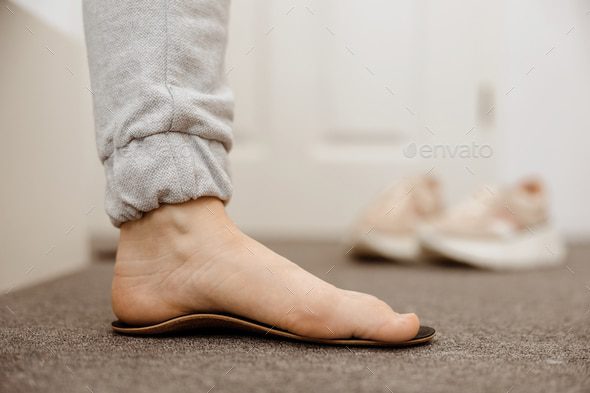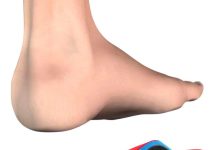
Let’s talk about the age-old debate between orthotics and insoles. We’ve all experienced foot discomfort at some point in our lives, and whether orthotics or insoles are the superior solution has sparked numerous discussions.
This article aims to shed light on this topic and explore the differences between these two options. So, join us as we explore the world of orthotics and insoles to determine the right choice for you.
Definition of Orthotics and Insoles
What are Orthotics?
Orthotics are specialized devices designed to support, stabilize, and align the feet and lower limbs. They often correct biomechanical imbalances, alleviate pain, and improve overall foot function. Orthotics come in various shapes and sizes and can be custom-made or off-the-shelf.
What are Insoles?
Insoles, also known as shoe inserts or footbeds, are removable cushioned inserts that can be placed inside the shoes. They provide additional comfort, support, and shock absorption to the feet. Unlike orthotics, insoles are not typically intended to correct specific biomechanical issues but are more focused on enhancing cushioning and relieving general foot fatigue.
Purpose of Orthotics and Insoles
Orthotics’ Purpose
The primary purpose of orthotics is to correct or accommodate biomechanical abnormalities in the feet and lower limbs. They can help maintain proper alignment, distribute pressure evenly, and optimize foot function. By providing support and stability, orthotics can help alleviate foot and leg pain, improve posture, and contribute to overall body alignment.
Insoles’ Purpose
Insoles serve the general purpose of providing additional comfort, cushioning, and shock absorption to the feet. They are particularly beneficial for individuals who spend long periods on their feet or engage in high-impact activities. Insoles can help reduce foot fatigue and relieve common conditions such as plantar fasciitis, heel pain, or metatarsalgia.
Types of Orthotics and Insoles
Different Types of Orthotics
There are two main types of orthotics: custom-made and over-the-counter (OTC) orthotics. Custom-made orthotics are individually crafted based on a detailed analysis of the individual’s foot structure, gait pattern, and specific needs. On the other hand, OTC orthotics are pre-fabricated and available in various sizes and arch heights. While custom-made orthotics offer a personalized fit and are more effective for addressing complex foot issues, OTC orthotics can be a cost-effective option for mild to moderate foot discomfort.
Different Types of Insoles
Insoles also come in various types, including cushioned insoles, arch support insoles, and gel insoles. Cushioned insoles provide extra padding and shock absorption, ideal for individuals who require additional cushioning and comfort. Arch support insoles are designed to provide targeted support to the arches, helping alleviate arch-related discomfort. Gel insoles use gel-filled compartments to enhance cushioning and provide relief from pressure points, making them suitable for individuals with sensitive or painful feet.
Customization and Fit
Customization of Orthotics
Custom-made orthotics are tailored to an individual’s unique foot structure and biomechanics. A podiatrist or orthopedic specialist will conduct a thorough assessment, including taking molds or using computerized technology to create orthotics that provide optimal support and alignment. The customization ensures a precise fit, enhancing the effectiveness of the orthotics in addressing specific foot issues and promoting overall comfort.
Customization of Insoles
While many insoles are available in standard sizes, some brands offer customizable options to accommodate individual needs better. These insoles can be trimmed or molded to fit the specific size and shape of the shoe, providing a more personalized fit. This customization can help improve the insole’s comfort and performance, ensuring it adequately supports the feet and reduces discomfort.
Support and Stability
Orthotics’ Support and Stability
Orthotics are specifically designed to support and stabilize the feet and lower limbs. They can help distribute weight evenly, reduce excessive motion or pronation, and improve overall gait mechanics. The support offered by orthotics can be particularly beneficial for individuals with flat feet, high arches, or conditions like plantar fasciitis, shin splints, or knee pain. By improving foot alignment and stability, orthotics can alleviate discomfort and prevent further damage.
Insoles’ Support and Stability
While providing some support, insoles generally focus more on cushioning and shock absorption rather than correcting extensive biomechanical imbalances. They can help reduce pressure on specific foot areas, such as the heel or ball, and provide a more comfortable walking or running experience. However, insoles are not typically recommended as the primary solution for significant foot or lower limb issues requiring substantial support and stability.
Pain Relief
Orthotics’ Pain Relief
Orthotics are a non-invasive treatment for foot and lower limb pain. They can help alleviate pain caused by plantar fasciitis, bunions, Achilles tendonitis, or arthritis. By providing proper support, cushioning, and alignment, orthotics can alleviate pressure and stress on affected areas, promote healing, and enhance comfort during everyday activities or sports.
Insoles’ Pain Relief
Insoles, particularly those with extra cushioning or targeted pressure relief features, can offer pain relief for individuals experiencing common foot conditions or general foot fatigue. They can help reduce discomfort caused by prolonged standing, walking, running, or wearing shoes that lack adequate cushioning. While insoles may not address the underlying cause of the pain, they can provide temporary relief and enhance overall foot comfort.
Specific Conditions
Orthotics for Specific Conditions
Orthotics can be highly beneficial in managing various foot conditions. Orthotics can provide arch support and enhance foot alignment for individuals with flat feet, reducing pain and preventing progression. Those with high arches may benefit from orthotics that offer additional cushioning and shock absorption to compensate for limited natural foot flexibility. Orthotics can also help individuals with conditions like plantar fasciitis, Achilles tendonitis, or diabetic foot ulcers by providing proper support and pressure redistribution.
Insoles for Specific Conditions
Insoles can offer relief for individuals with specific foot conditions or discomfort related to standing or walking for extended periods. For individuals with conditions like metatarsalgia, insoles with metatarsal pads can help alleviate pain and reduce pressure on the balls of the feet. Insoles with arch support can ease discomfort for individuals with fallen arches or overpronation. Additionally, insoles can be a practical option for individuals with arthritis or diabetes as they provide additional cushioning and support.
Longevity and Durability
Orthotics’ Longevity and Durability
The longevity and durability of orthotics can vary depending on the materials used, the individual’s weight and activity level, and the care provided. Custom-made orthotics, crafted from high-quality materials, have a longer lifespan than OTC orthotics. On average, custom-made orthotics can last anywhere from two to five years, while OTC orthotics may require replacement more frequently, generally every six months to two years.
Insoles’ Longevity and Durability
Insoles, which are less specialized and typically made of softer materials, generally have a shorter lifespan than orthotics. On average, they may last anywhere from six months to a year, depending on the quality of the insole and how frequently it is used. Regularly replacing insoles is essential to ensure continued comfort and support, especially if they show signs of wear and tear.
Cost Comparison
Orthotics’ Cost
Custom-made orthotics are more expensive than OTC orthotics due to their personalized design and fabrication process. The cost of custom orthotics can range from a few hundred to several hundred dollars, depending on factors such as the type of orthotics, materials used, and the provider’s expertise. Health insurance may partially or fully cover the cost of custom orthotics in some cases, particularly if they are deemed medically necessary.
Insoles’ Cost
Insoles are generally more affordable compared to orthotics. OTC insoles can be found at various price points, ranging from inexpensive options available at drugstores to more premium, specialized insoles. OTC insoles typically range from $10 to $50, depending on the brand, materials used, and additional features. While customizability and specialized features may increase prices, insoles remain a more cost-effective alternative to custom-made orthotics.
Conclusion
Both orthotics and insoles have unique benefits and purposes, depending on individual needs and specific foot conditions. Orthotics offer personalized support, stability, and correction for more significant biomechanical issues.
They are especially beneficial for individuals with chronic foot pain or conditions that require precise alignment and pressure redistribution. Insoles, conversely, provide additional cushioning and comfort, making them suitable for individuals seeking relief from general foot fatigue or mild discomfort. While orthotics may be a more significant investment, insoles offer a more cost-effective solution for temporary relief.
The choice between orthotics and insoles ultimately depends on the severity of the condition, the level of support required, and individual preferences. It is always recommended to consult with a healthcare professional to determine the most suitable option to address specific foot concerns.







































